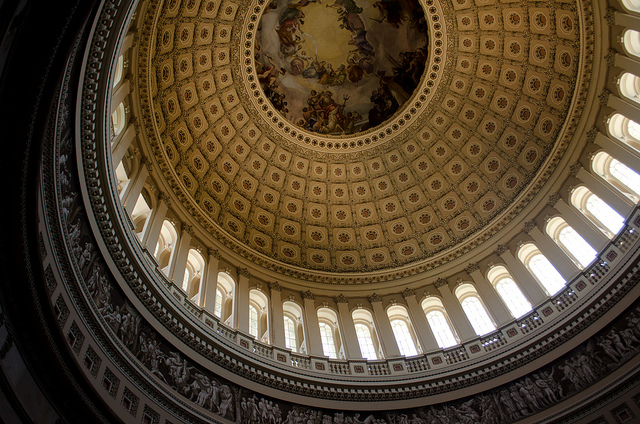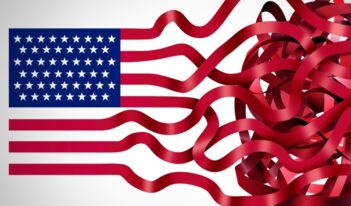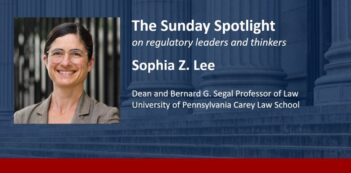
Regulatory capture is hard to pin down, its elusiveness stemming from four principal factors.
Nearly everyone sees regulatory capture – and rightly disdains it. And yet, for a phenomenon so universally decried, capture actually remains quite elusive.
Since capture has been so roundly condemned, surely we know exactly which federal regulatory agencies are most captured. Surely we can measure with precision whether regulatory capture is getting better or worse over time, or evaluate reforms to see which ones yield the greatest reductions in regulatory capture.
And yet, no index exists characterizing U.S. agencies based on regulatory capture. Regulatory capture is instead a lot like how former Supreme Court Justice Potter Stewart defined obscenity: “I know it when I see it.”
The problem with capture is that different people “see” different things. Those on the political left see signs of capture in weak laws or lax law enforcement, while those on the right see capture in strict laws imposing burdens on smaller businesses and new competitors. Can both be correct?
Perhaps, but it is also easy for people to talk past each other when talking about capture. It is hard to pin the phenomenon down. Capture’s elusiveness stems from four principal factors.
First, different people mean different things by “capture.” Some people mean simply that public policy outcomes exhibit a general bias in favor of one segment of society, such the wealthy, over other segments. Others mean not a general policy bias, but a very specific bias: namely, bias toward firms in the regulated industry that succeed in influencing policy outcomes to reap benefits for themselves at the expense of society overall. (Economists tend to call such benefits “rents.”)
Second, irrespective of how people define capture, a question of proof arises. Some view capture as a binary condition – an agency either is or is not captured. Others view capture as arrayed along a spectrum. Both views demand a showing of some level of bias, whether general or specific. But how much bias must exist to say that a regulator has been captured, even if it is just to a small degree? Does just one instance – say, a single rule slightly weakened, or a single inspection not conducted – constitute capture? Unfortunately, there exists no accepted standard for the relevant units of measure or how to count them.
Third, although capture might be intrinsically problematic, it often is viewed as a cause of other problems, such as chemical accidents, cases of fraud, or instances of market consolidation. When people see that these other problems exist, and when they observe that regulation has failed to correct or prevent them, they infer that capture must have been the root cause. This is why we see a resurgence of interest in regulatory capture in the wake of the 2008 financial crisis, the Gulf Coast oil spill, and other perceived regulatory failures. The only thing is: regulatory problems might have still other causes too. Laziness, shortsightedness, and incompetence can also lead to policies that end up favoring some interests in society at the expense of others. Capture is not the only source of bad public policy outcomes; finding the latter does not ipso facto prove the former.
What distinguishes capture from other sources of bad public policy outcomes? Therein lies a fourth and final reason for capture’s elusiveness. Notwithstanding differences in definitions, most conceptions of capture tend to share three components in common: (1) industry actors influence policymakers (2) to reap private benefits (3) to the detriment of the overall public interest. Each of these steps is hard to demonstrate, some wickedly so.
Step 1: Influence. Influence is not the same as lobbying. Lobbying is an activity undertaken in an effort to influence. In other words, it is undertaken to make regulators act in ways they would not have otherwise acted in the absence of the lobbying. Lobbying is observable; influence is not. Finding influence requires assuming or estimating a counterfactual world without the lobbying activity, and then comparing what regulators did with what they would have otherwise done, were it not for industry lobbying. That is not easy to do.
Step 2: Industry benefits. It is also not always easy to discern what counts as a benefit to industry. Suppose an industry consistently convinces a regulator to weaken new regulatory standards. Suppose further that, as a result, instead of industry bearing tens of billions of dollars in regulatory costs, the regulators impose “only” billions in costs on industry. Has industry benefited? It has clearly fared better than had it not tried to influence the regulator, but it also seems hardly “advantaged” relative to a world without regulation. After all, it is still incurring billions of dollars in regulatory costs.
Step 3: Public-interest detriment. Just because industry may reap benefits from its influence, this does not necessarily mean that the public interest has been compromised. Most policies require a balancing of benefits and costs. If an industry’s influence only counteracts a regulator’s tendency to adopt policies that would impose costs grossly disproportionate to benefits, then there may not exist any detriment to the overall public interest. Does capture then really exist?
Just as we cannot readily observe counterfactuals in order to demonstrate influence, we also cannot readily observe the optimal points at which regulatory policies should be set or enforced. In fact, political leaders, scholars, and members of the public disagree over where those points lie. Disagreement does not mean, of course, that anything goes. But it does help explain why everyone seems to “see” capture – because there are plenty of regulatory policies and practices with which to disagree.
All sides think they are right in seeing capture when they do. What people see as capture, though, depends crucially on the definitions they have in mind, the assumptions they make about counterfactuals, and the value choices they embrace. This is why it is so difficult to capture “capture.” It is also why undertaking the pursuit demands still more careful thought and analysis.
This essay is part of The Regulatory Review’s sixteen-part series, Rooting Out Regulatory Capture.




